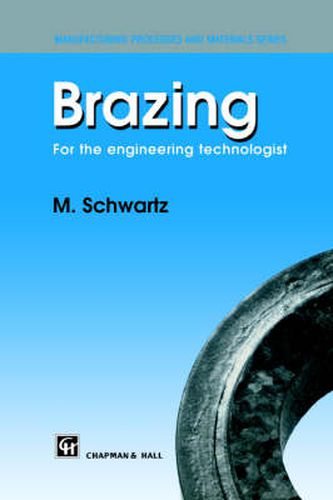Readings Newsletter
Become a Readings Member to make your shopping experience even easier.
Sign in or sign up for free!
You’re not far away from qualifying for FREE standard shipping within Australia
You’ve qualified for FREE standard shipping within Australia
The cart is loading…






This title is printed to order. This book may have been self-published. If so, we cannot guarantee the quality of the content. In the main most books will have gone through the editing process however some may not. We therefore suggest that you be aware of this before ordering this book. If in doubt check either the author or publisher’s details as we are unable to accept any returns unless they are faulty. Please contact us if you have any questions.
As more materials with specific characteristics are made available to the design engineer the need to be able to effectively combine these has been increased. Consequently joining techniques such as brazing have become increasing important and there is a greater need to fully understand the process. The aim of this text is to provide a comprehensive overview of the technology surrounding the brazing process to allow the inexperienced engineer, student or professional, to fully utilize this technology. It begins by explaining the history behind the development of the brazing before moving on to discuss the important parameters and elements of the process itself. Chapter 3 discusses the fundamental importance of the base metal and its associated characteristics and Chapter 4 explains how to select the most appropriate base before moving on to discuss filler metal. A detailed description of all the important fiber materials is given as is the family groups of the base metals. Flux and atmospheres are then outlined followed by a discussion of joint design, tooling, surface preparation, inspection and safety. Applications are considered in chapter 7 before finally looking to the future of brazing.
$9.00 standard shipping within Australia
FREE standard shipping within Australia for orders over $100.00
Express & International shipping calculated at checkout
This title is printed to order. This book may have been self-published. If so, we cannot guarantee the quality of the content. In the main most books will have gone through the editing process however some may not. We therefore suggest that you be aware of this before ordering this book. If in doubt check either the author or publisher’s details as we are unable to accept any returns unless they are faulty. Please contact us if you have any questions.
As more materials with specific characteristics are made available to the design engineer the need to be able to effectively combine these has been increased. Consequently joining techniques such as brazing have become increasing important and there is a greater need to fully understand the process. The aim of this text is to provide a comprehensive overview of the technology surrounding the brazing process to allow the inexperienced engineer, student or professional, to fully utilize this technology. It begins by explaining the history behind the development of the brazing before moving on to discuss the important parameters and elements of the process itself. Chapter 3 discusses the fundamental importance of the base metal and its associated characteristics and Chapter 4 explains how to select the most appropriate base before moving on to discuss filler metal. A detailed description of all the important fiber materials is given as is the family groups of the base metals. Flux and atmospheres are then outlined followed by a discussion of joint design, tooling, surface preparation, inspection and safety. Applications are considered in chapter 7 before finally looking to the future of brazing.